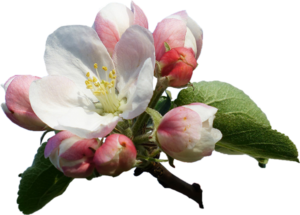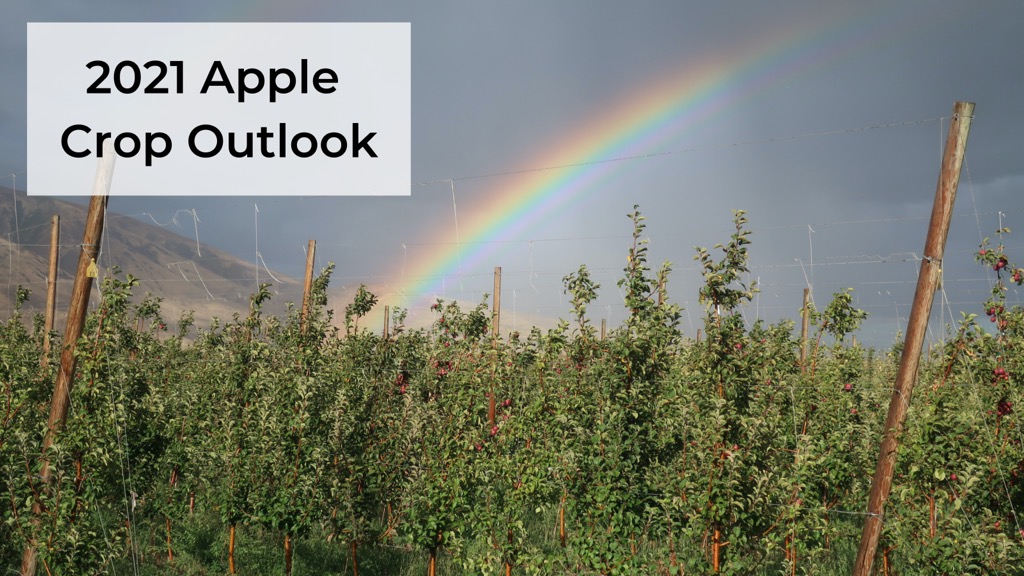Posts by Woodley Smith
CiderCon® Early Bird Registration Extended

Who needs some good news? Yes, Mercury is no longer in retrograde. But that’s not our news. We know our members are busy making cider right now, so we’ve decided to extend early bird CiderCon® 2022 registration pricing until Halloween. We can’t wait to see all of you for our beloved CiderCon® in Richmond, Virginia in February!
The extension means an extra 11 days to lock in the early registration fee of $395 for you and all of your employees for what promises to be an awesome return to CiderCon® in-person.
We are happy to have renowned cidermaker Diane Flynt join us as our Keynote Speaker. You can read more about Diane in our blog. This year’s workshop tracks include: (1) Cidermaking (2) Apples & Orcharding (3) Sales & Distribution (4) Better Business (5) Flavor & Terroir (6) Legal & Compliance (7) Marketing & Trends and (8) History.
The famous CiderCon® trade show is shaping up to be a great place to meet the amazing vendors who help support our industry. Are you a vendor that would like to join us? Do you know a business that you would love to see at the trade show? Contact Ellenfor details.
There’s a plethora of add-on options available this year. We have tours, tasting, t-shirts, cider share and more available. You can learn more about these options on our registration page. Definitely check out the incredible tours and tastings before they sell out!
You can learn about all things CiderCon® 2022 at our website, and we’ll have more exciting announcements soon.
We’ll see you in Richmond!
Michelle, Woodley & Ellen
P.S. Wanting to up your cider street cred? You can take your Certified Pommelier™ exam at CiderCon®! The exam will be held Wednesday, February 1, 2021 at the Marriott Hotel in Richmond. You can learn more and find links to register in our blog!
P.P.S. Don’t forget to book your rooms in the CiderCon® block at the Marriott. You can book them here.
Thank you to our premier sponsor:
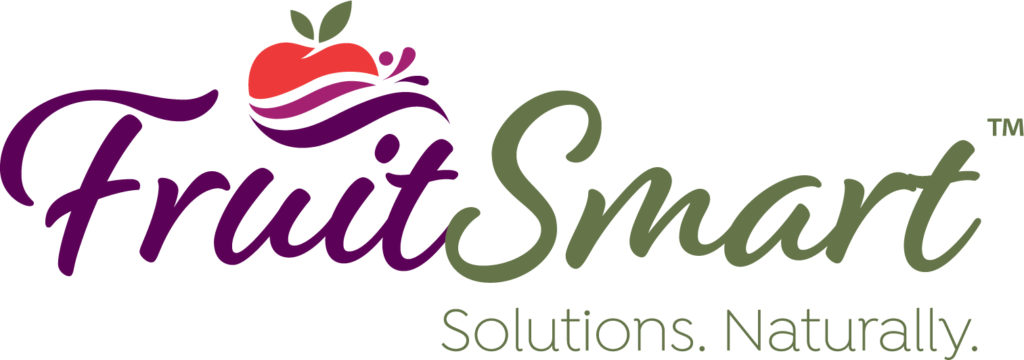
CiderCon 2022 Registration Now Open
The American Cider Association Presents CiderCon® 2022 in Richmond Virginia!
February 1-4, 2022

The American Cider Association is pleased to announce that registration is now open for CiderCon® 2022! We are thrilled to be planning to gather in person in Richmond, Virginia from February 1-4, 2022. Register before October 31 to lock in early bird pricing!
Click below to learn about:
Cider Tasting/Cidermaking Workshops


Thanks to our premier sponsor:

CiderCon 2022 Tasting Sessions
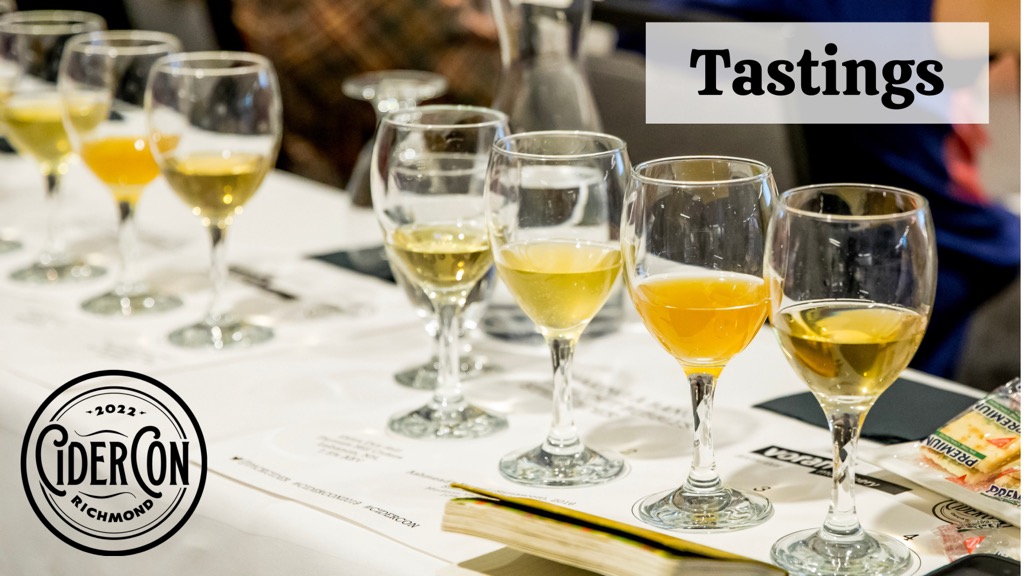
We are thrilled to offer several tastings at CiderCon® 2022! Seating is limited in CiderCon® workshops, including tastings. Read our full Health & Safety Guidelines. Sign-up for tastings available during registration.
NEW! Top of the Mitten: High Latitude Ciders from Northern Michigan
Moderator: Nicole LeGrand Leibon
Speakers: Dan Young, Tandem Cider; Dion Stepanski, Presque Isle Farm; Left Foot Charley, Bryan Ulbrich
Price: $10 Thursday, 1:45-2:45pm
Already registered for CiderCon® 2022 but you’d like to add on this tasting? Register here.
This session will be a guided sensory exploration of ciders from near or north of the 45th parallel. We’ll explore the impact of the Great Lakes, the soil, orchard history and more on these ciders from Northern Michigan.
400 Years of American Alcohol: Cider, History, Cocktails and More
Presenter: Tiffanie Barriere, The Drinking Coach
Price: $10 Thursday 10:30-11:30
Already registered for CiderCon® 2022 but you’d like to add on this tasting? Register here.
Alcohol has a tasty history in America. Cider was seen as early as 1622. We are still counting and discovering some of the historical names that helped alcohol become what it is today. With the help of original records from the service industry we are able to explore many stories on alcohol production, service and even cocktail incorporation dating back hundreds of years. To explore this history, Tiffanie Barriere–a renowned mixologist, author, speaker and researcher–brings this mash-up session to CiderCon. Her workshop will be one part history and one part inspired cider cocktail creation. She will talk about important names, historical figures, legendary Black bartenders and she will also teach you how to make amazing cider cocktails.
Fruited Ciders: Beyond the Apple – SOLD OUT
Moderator: Christine Walter
Price: $8 Thursday 10:30-11:30
Fresh, frozen, puréed, essenced? Before, during, after? Answers to all of your questions, plus sourcing ideas and tasty examples to making excellent fruit ciders. This session is designed for cidermakers just getting their start. Featured Cider Makers: TBA
Creating Consumer Excitement with Food Pairing Suggestions – SOLD OUT
Presenter: Jennie Dorsey, Cider Educator
Price: $10 Thursday 2:00-3:00
We all know the “Four C’s” of food pairing, but putting theory into practice can be a little intimidating, especially for members of your tasting room staff that are just beginning their adventure with cider. In this session, cider and food pairing expert Jennie Dorsey will walk you through a pairing framework (with tasting samples!) that you can take back to your business, train your staff, and watch your sales grow.
Tasting and Terroir of True Crabs Non- Malus Domestica Apples – SOLD OUT
Moderator: Dan Pucci, Author
Price: $12 Thursday 3:30-4:30
Malus Domestica is not the only game in town. The Malus genus is diverse with apples native to biomes across the world, wild, feral or bred with intention. Typically valued more for their flowers than fruit, cider is adapting them into its diverse tool box. This talk will look at how these apples perform in a wide range of different growing environments and how they can be used in a wide range of different cider making styles. Featured Cider Makers: TBA
Survey of Yeast-Derived Characteristics and Hands-On Blending – SOLD OUT
Moderator: Aaron Homoya
Price: $10 Thursday 3:30-4:30
Take your experience with the possibilities of flavor and aroma contributions of yeast strains to the next level with this tasting panel of cider made from one juice and a range of yeasts. Featured Cider Makers: TBA
Southern Cider Apples: A Recipe for Complex Flavor & Changing Climate – SOLD OUT
Moderator: Diane Flynt, Apple Grower and Cider Maker
Price: $12 Friday 10:30-11:30
Diane Flynt will set the stage for exploring southern cider apples with historic context for old southern cider apple varieties. Presentation will include color slides of southern apple varieties. The panel discussion will touch on fruit cultivation but will focus on the use of older southern varieties in cider.
Panel discussion topics: Varietal characteristics of old southern apples in cider; Cidermakers’ experience in using old southern apples in cider; Consumer response to cider made with old southern apples; Optional: apple tasting and cider tasting. Featuring: David and/or Ann Marie Thornton, James Creek Cider House, Tim Wright, Wise Bird Cider, Will Hodges, Troddenvale Cider
A Cider Among the Faults – An Aroma-Based Sensory Workshop
Presenter: Nicole Leibon, Chris Gerling, Jocelyn Kuzelka
Price: $12 Friday 10:30-11:30
Already registered for CiderCon® 2022 but you’d like to add on this tasting? Register here.
Take a good look at this line-up of five suspect ciders and put your detective (and detecting) skills to the test. Only one is innocent, the other four are fatally faulted by the usual (and maybe unusual) suspects. Discussion will include detection and rejection thresholds, their impact on how ciders and faults can be perceived differently, and ways to avoid or fix the faults found in the line-up.
Introductory Palate Training – SOLD OUT
Presenter: Darlene Hayes
Price $10 Friday 2:00-3:00pm
When learning the art of evaluating a cider it can be helpful to start by familiarizing your palate with individual structural elements. In this session, you will experience first hand the flavor and texture differences between several types of acids typically found in cider as well as different sugar levels and types of tannin. Give yourself a great foundation from which to take your tasting skills to the next level.
Best Practices for Producing Ciders with Residual Sugar – SOLD OUT
Moderator: Brighid O’Keene
Price: $10 Friday 2:00-3:00pm
This tasting session will explore methods and tips for producing cider with residual sugar. You will hear from cider makers producing at various scales and with different equipment about how to successfully make sweeter cider. We’ll explore downstream processing and safe bottling with a focus on best practices. Featured Cider Makers: TBA
Wild, Clean & Free: Harnessing the Beauty of Wild-fermenting, Without the Flaws – SOLD OUT
Moderator: Christine Walter
Price: $12 Friday 3:30-4:30pm
This tasting session will be a deep dive into making the most of traditional and pet-nat processes while producing a cleanly fermented sparkling cider. Featured Cider Makers: TBA
New and Updated Cider Share Returns to CiderCon!

UPDATE 01/25/2022: The 4:00pm Cider Share is Sold Out. If you are already registered and would like to add the 6:00pm Cider Share on to your registration please email Ellen and she will add you and you can pay when you check in at the registration desk. If you are not registered, Cider Share can be added on during the registration process.
CiderCon® is thrilled to present an in-person conference and trade show in Richmond, Virginia from February 1-4, 2022 for American Cider Association members. Our beloved welcome reception, Cider Share, is also back!
There are two Cider Share receptions on Wednesday, February 2, 2022, a 4:00pm salon and 6:00pm salon. Tickets to Cider Share will be $20 per person. Each Cider Share time slot will be limited to 200 people. Please read the complete Health and Safety Guidelines for more information about the American Cider Association’s COVID-19 protocol for CiderCon® 2022.
Each Cider Share Salon will feature 25 different cideries, representing cider from around the US and the world. Featured cideries will be chosen using a lottery along with considerations of geography and style. If you would like to be considered as a featured cidery at Cider Share 2022, please select that choice during the CiderCon registration process. The lottery drawing will be held in early November and those selected will be notified via email with further details.
Take the Certified Pommelier Exam at CiderCon 2022!
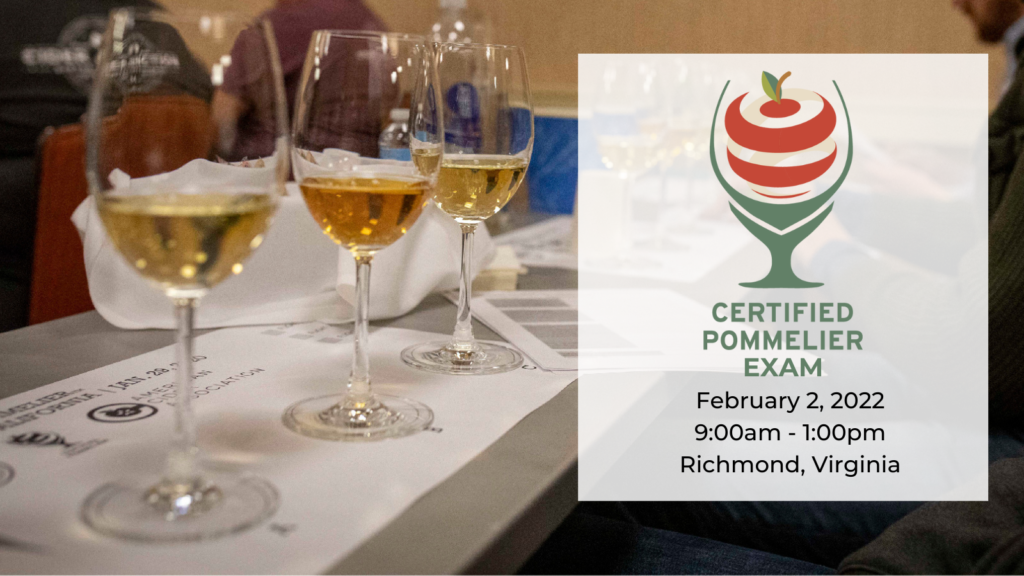
WHAT IS THE CERTIFIED POMMELIER™ EXAM?
American Cider Association’s mission is to grow a diverse and successful U.S. cider industry by providing valuable information, resources and services to our members and by advocating on their behalf. One way to fulfill this mission is through the Certified Cider Professional Program–a program aimed at educating the front-line of cider sales (distributors, retailers, bartenders and more!).
The intro-level certification (CCP Level 1) is an online test that can be taken at any time. The more advanced level of certification–the Certified Pommelier™ exam–is a sit-down hand-written exam: part short answer, part essay questions, and part sensory and taste evaluation questions. *CCP Level 1 is a prerequisite for Certified Pommelier.
Certified Pommeliers™ must have a fundamental understanding of all topics covered in CCP Level 1, but must also be able to think critically and use the basics to demonstrate a higher understanding of the elements of cider. The exam consists of five types of questions: short answer, fill in the blank, matching, essay and blind sensory (based on tasting).
The test is meant to be challenging. Studying is highly recommended.
The topics covered in the exam are:
- Apples, the Orchard & History
- Cider Making
- Flavor & Evaluation
- Cider Families
- Keeping & Serving
- Food & Cider
- Social Responsibility.
*If a test-taker passes only the written or only the tasting portion of the exam, they are permitted the opportunity to retake the un-passed portion of the exam at a future date (within 18 months).
WHY BECOME A CERTIFIED POMMELIER™?
Cider is a beautifully nuanced beverage with a diverse set of elements that are often misunderstood by food and beverage professionals. Certifications are increasingly used in the professional realm to set oneself apart as an individual with specialized knowledge, though cider is often covered in a cursory manner by most certification programs, if at all. Although there are already more than 1,700 Level 1 Certified Cider Professionals, being recognized as a Certified Pommelier™ will put you in the vanguard of verified advanced cider specialists in this ever growing category.
HOW MUCH DOES THE TEST COST?
For ACA members, the exam is $125 per attempt. There is a discount code that members can access to receive the exam at the membership rate of $125. That discount code can be found here. For non-members, the exam is $200. Should it be needed, test takers can retake future written or tasting portions of the exam at a separate sitting with a 25% discount.
COVID PROTOCOL
Test takers must provide either proof of full vaccination against COVID or negative PCR test results received no earlier than Sunday, January 30. One these two things is required for entry, and there will be no refunds if you are unable to provide them. Test takers will be socially distanced and will wear masks unless actively evaluating a cider. Cider evaluations will take place in a separate room from the written theory portion of the exam. The full CiderCon Health & Safety Guidelines can be downloaded HERE.
WHERE WILL THE TEST TAKE PLACE
Marriott
500 E Broad St
Richmond, VA 23219
FAQs
- What is the COVID-19 protocol during the Certified Pommelier™ test? Test takers must provide either proof of full vaccination against COVID or negative PCR test results received no earlier than Sunday, January 30. One these two things is required for entry, and there will be no refunds if you are unable to provide them. Test takers will be socially distanced and will wear masks unless actively evaluating a cider. Cider evaluations will take place in a separate room from the written theory portion of the exam. The full CiderCon COVID-19 protocol can be downloaded HERE.
- Are there ID or minimum age requirements to enter the event? YES- You must be 21 or older and you must provide an ID to prove you are who you say you are.
- Do I need to pass the level 1 CCP exam to take the Certified Pommelier™ test? Yes. Passing the Level 1 CCP exam is a prerequisite. If you have not yet taken the Level 1 exam, you can purchase the Level 1 bundle on demand HERE. The bundle includes an on-demand webinar, study guide, and access to the online exam.
- What can I bring into the event? Nothing may be brought into the exam room. Cell phones must be left at the door. Pencils and drinking water will be provided.
- How can I contact the organizer with any questions? Please contact CCP contributor and proctor Jennie Dorsey at jennie@ciderassociation.org.
- What’s the refund policy? We will refund test takers up until January 26, 2022. Eventbrite doesn’t give us the option to issue refunds through the system so checks will be issued.
- Is there a training workshop? This is not a workshop, but an exam only. Once you register for your exam, study materials including webinars and study guides will be emailed to you. There is also a dedicated Facebook Group (that is open for all to join) with prep materials and in depth peer conversations. STUDY! We highly recommend interviewing cidermakers and cider tenders to help prepare. Blind tasting flights are also good prep.
- Is it ok if the name on my ticket or registration doesn’t match the person who attends? If you are transferring registration to another person, please email us in advance.
- Is there a tasting section on the test? Yes. You will be asked to evaluate ciders from multiple cider families.
- How long does the test take? It takes most students 2-3 hours to complete.
- If I sign up for this exam, do I have to register to attend CiderCon? No. This exam is an independent event and does not have to be purchased in conjunction with CiderCon tickets.
Thanks to our CCP and Certified Pommelier™ sponsor:

Download Nielsen 2021 Quarter 2 Reports
This content is for members only.
If you were a member and are now seeing this message, please Renew your membership to continue.
CiderCon® 2022 Will Feature Four Virginia Cider Tours

The American Cider Association is pleased to announce that in collaboration with the Virginia Wine Board and Virginia Association of Cider Makers there will be four tours available for attendees of CiderCon® 2022. The tours will feature Albemarle County, Nelson County, the Northern Shenandoah Valley, and Richmond’s Jackson Ward.
Albemarle County Tour – SOLD OUT
Located in the foothills of the Blue Ridge Mountains of Virginia, Albemarle County has been an apple growing and cider making region since the earliest days of European settlers. Join the tour of this historically rich area and taste the wide variety of ciders produced here. The tour will begin with a cidery tour and tasting with Don Whitaker at Castle Hill Cider. Next up will be a cider and local charcuterie tasting with Andy Hannas at Potter’s Craft Cider, followed by lunch from Plenty Cville. The day will wrap up with a cider tasting and tour with local legend Chuck Shelton of Albemarle CiderWorks before the bus heads back to Richmond.
Nelson County Tour – SOLD OUT
Enjoy the rich orchard heritage of Nelson County. The tour starts with the Virginia outpost for Blue Toad Hard Cider. Todd Rath will host a cidery tour and tasting at their facility at the base of Wintergreen. Next up will be a tour at Bold Rock Hard Cider with a tasting of ciders not widely distributed. Followed by lunch at their tasting barn. Then, the tour will travel down the road to Silver Creek Orchards, a multi-generational apple grower and longtime supporter of the Virginia cider industry. Adam Cooke will give a tour of their orchards and custom crush operation. Coyote Hole Ciderworks will be on hand for a final cider tasting before heading back to Richmond.
Northern Shenandoah Valley Tour
The Shenandoah Valley, nestled between the Blue Ridge and the Allegheny Mountains, is the heart of historic Virginia apple country. Come join a tour of some of the valley’s orchards and discussions on growing apples and cider production techniques in the valley. Six cideries will be visited on the two-day tour. The tour will start at Lost Boy Cider for lunch on January 31, 2022. Following orchard visits, dinner will be at Winchester Ciderworks and also feature the Old Town Cidery. Accommodations will be at the George Washington Hotel, a Wyndham Grand Hotel. After breakfast at the hotel on February 1, 2022, there will be stops at Old Hill Cidery, Sage Bird Ciderworks for lunch and Cider from Mars as you meander your way back to Richmond.
Jackson Ward Tour
Celebrate Black History Month in Richmond’s Jackson Ward, once known as Black Wall Street for the many financial services, cultural icons, and entrepreneurs who made the neighborhood thrive. This guided bus and walking tour includes history, food and of course cider, most of it within walking distance of the conference in case you want to circle back for more on your own.
Tour Registration
Tour registration will be available as an add on when CiderCon® registration opens. To learn more about pricing and what is included in the tours, check out the CiderCon® Tours webpage.
CiderCon 2022® will take place in Richmond, Virginia from February 1-4, 2022. For more details about CiderCon® activities, follow @cidercon on Twitter or head to the CiderCon® website.
ACA Announces Diane Flynt as CiderCon® 2022 Keynote Speaker

The American Cider Association is pleased to announce that award winning cidermaker Diane Flynt will be the keynote speaker at CiderCon® 2022 set to take place in Richmond, Virginia from February 2-4, 2022. Her keynote presentation will highlight the history and legacy of southern apples and cider. There are many lessons that can be learned from that past that can apply to creating a more sustainable future for the American cider industry.
Flynt’s own history in the cider industry began in 1997 when she founded Foggy Ridge Cider, the first licensed cidery in the South, by planting cider apples, including many southern varieties. From 2004-2018 Foggy Ridge Cider produced 5300 gallons a year of orchard-focused ciders that was distributed across 15 states.
Since its first production, Foggy Ridge Cider gained a national reputation for high quality cider. Foggy Ridge was featured on CBS Sunday Morning Show, and in publications including Gourmet, Imbibe, Saveur, Garden & Gun, Esquire and Martha Stewart Living. Food & Wine magazine named Foggy Ridge a “Small Batch Superstar” in 2010. MADE: In America awarded Foggy Ridge a 2012 American Treasurer’s Award, recognition for artisan producers. Foggy Ridge Cider received many “best of” awards, including a top rating from the New York Times for its Serious Cider blend.
Flynt herself was nominated for the James Beard Award for Outstanding Beverage Professional in 2015 and 2016, and was a finalist for this award in 2017 and 2018. She speaks on cider, farming and food culture in national and regional forums.
“We are thrilled to have Diane Flynt joining us in Richmond at CiderCon 2022 as our keynote speaker,” says American Cider Association Executive Director Michelle McGrath, “Her wealth of knowledge and experience in the cider industry is impressive and I know that attendees will walk away from her talk with new inspiration for ways to move forward sustainably in their own cider businesses.”
After moving to an online format for CiderCon® in 2021, the American Cider Association is looking forward to hosting an in-person event for CiderCon® 2022, presented by premier ACA sponsor, FruitSmart. Planning for sessions, the extensive trade show, several regional tours, and various local cider events is well under way and the ACA believes that Richmond will be an exciting city in which to be located. The rich history of southern cider will provide a broad focus on a regional lens and Flynt and other speakers are expected to address the role enslaved people, such as George and Ursula Granger, played in the development of cider in the United States.
Anne Shelton of Albemarle Ciderworks and the Virginia Cider Association President comments, “The Virginia Cider Association is pleased to welcome CiderCon® to the Commonwealth of Virginia. VCA members have been working hard to make CiderCon® 2022 a memorable experience for cider producers and cider enthusiasts both from the US and abroad.”
The ACA will be forming a COVID-safety plan for CiderCon 2022 to ensure that all attendees can participate with as little risk as possible. Both CDC and Virginia guidelines will be considered. The plan will be announced when ticket sales launch later this month.
CiderCon® is the premier conference for cidermakers in the United States. For more information about CiderCon® or the American Cider Association please contact Michelle McGrath. Follow @cidercon on Twitter for the latest news or head to the CiderCon® website for updates.
August 2021 Covid Relief Updates
There’s been some changes in the SBA Covid Relief Programs recently. Read below to learn more about these changes and how they might impact your business.
PPP Loan Forgiveness
The Paycheck Protection Program (PPP) loan period ended May 31, 2021. Existing borrowers may be eligible for loan forgiveness for all of their PPP loan. Loan forgiveness for both First and Second Draw PPP loans are available if the following criteria is met:
- Employee and compensation levels were maintained for the 8-24 week covered period.
- The loans were spent on payroll and other eligible expenses.
- At least 60% of the proceeds went to payroll costs.
Businesses can apply for loan forgiveness as soon as all the loan proceeds have been used.
Many lenders have signed on to the Direct Forgiveness Portal set up by the SBA to streamline the loan forgiveness process. You can download an Excel spreadsheet HERE to see if your lender has signed up for the Direct Forgiveness Portal. Contact your lender directly for their loan forgiveness program if they have not joined the portal. All businesses applying for forgiveness will have to submit information regarding the use of the PPP loan proceeds they received. You can read more about what documentation you will need to provide HERE.
Shuttered Venue Operators Grant
Note: The deadline to apply for the Shuttered Venue Operators Grant (SVOG) is Friday, August 20, 2021 at 11:59pm Pacific Time. Later in August, those that receive an SVOG will be able to apply for a supplemental grant up to 50% of the original award amount.
The SVOG is available to businesses that support the arts, including venues with live music or performing arts. Businesses that received PPP loans are eligible to apply for the SVOG grant. You can download the Frequently Asked Questions PDF HERE.
Eligible applicants may be able to receive grants up to 45% of their gross earned revenue up to a maximum of $10 million.
Employee Retention Tax Credit
The Employee Retention Tax Credit (ERTC) was created as part of the CARES act to encourage employee retention during the COVID-19 pandemic. The ERTC allows qualified business to claim up to 70% of the first $10,000 in pay and health benefits in each quarter for which they qualify.
It has been extended several times and was set to expire December 31, 2021. The current national infrastructure bill that is before Congress now would end the ERTC early, changing the expiration date to September 30, 2021 if the bill passes before then.
Businesses may also apply retroactively for the credit for previous quarters dating back to the beginning of the pandemic. A rule change also allows businesses who received PPP loans to claim the ERTC and can be claimed retroactively as well. In addition, “recovery startup businesses” (being those that opened after February 15, 2020) will still qualify for the ERTC until the end of the year.
2021 Apple Crop Outlook
We reached out to extension agents and orchardists around the country to hear what they had to say about the progression of the 2021 apple crop around the United States. Here’s what they had to say.
Aidan Kendall, Mt. Vernon Northwest Washington Research and Extension Center, Mt. Vernon, WA
The cider apple research orchard at WSU NWREC consists of 65 different cultivars grafted onto Geneva 935 rootstock, and 4 cultivars grafted onto Geneva 202. Our apples are being managed with a conventional pesticide rotation. Apple anthracnose is present, though largely kept under control with the removal of contaminated wood. This year many of our cultivars are bearing little to no fruit as a result of a heavy crop in 2020, though what flowered was pollinated successfully by a new on-site hive. The heat wave brought sunburn to some cultivars with heavily exposed fruit, mostly in the border rows. We are grateful for healthy trees and as always, excited for this year’s harvest.
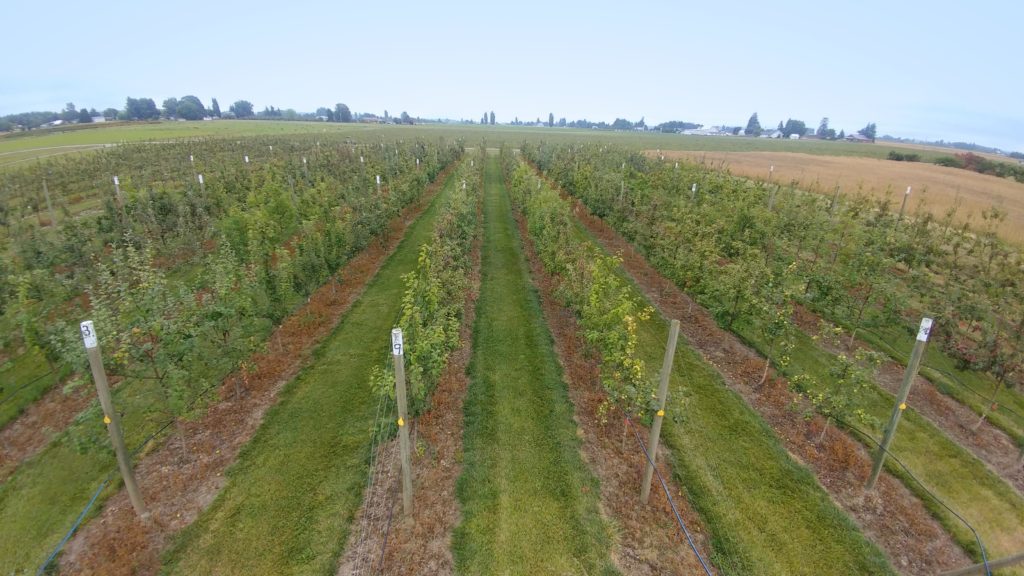
Jake Mann, The Five Mile Orchard, Pajaro Valley, CA
The 2020 harvest came on quickly after the heatwaves of August ripened the apples faster than expected. Our crews were helpful in sorting out sunburnt fruit while picking, and the sound crop stored well in our coolers. Wildfire smoke was an added challenge to harvest logistics, ending some picking days early even though the N95 masks provided by our County Agricultural Commissioner were very helpful to all involved. Apples do not pick up smoke taint, and so we were able to avoid the moral and financial quandary that the wine industry faces in these events. We simply wait until the next reasonable day to continue picking.
It was a dry winter. Pruning work was completed quickly in December and January thanks to no weather delays. Dormant sprays went on without difficulty. We received the most chilling hours seen here in 25-30 years… between 600 and 800, much more than needed to reset our trees. The bloom looked good, and there were no rain events during that time (and so, minimal apple scab events necessitating fungicide sprays beyond our regular applications) As we moved into May, it became apparent that fruit set was light across the Pajaro Valley. Looking back on cold days during bloom, a couple localized morning hail storms, and the possibility of a down year in what remains of a biennial bearing cycle (after 3 good harvests in 2018/2019/2020) has all the growers speculating about what happened, how harvest plans and crop projections will be adjusted. Some of our bonus varieties like Jonagold and Granny Smith (usually reliable croppers) are very light this year. Most of our Newtown Pippin blocks have an acceptable crop developing, and the Red Delicious and Fujis are looking decent enough to sustain a picking crew through harvest.
California is now in another historic drought and we are upping our irrigation plan for this season. We operate with temporary installations of 6″ mainline and 3″ sprinkler pipe, hooking up to shared wells as they’re available through a given week. Usually only applied once in July, we opted for an additional, early round in May that has given the crop a helpful boost going into the big growing days of summer.
Orchard work happens outside, and the folks in our crew remained healthy during the pandemic, save for one core personality, Don Pablo, who passed in January after battling COVID in the hospital for a month. His loss was a real blow to the spirit of the extended family who works to keep these local orchards rolling year after year. The mobilization by our County to get vaccines specifically to the agricultural community in February and March was such a relief, and recognition of support, for the hard working people in our corner of the State.
I’m thankful for the apples we have growing, on ranches that’ve been under our care for years, showing the wisdom and skill of our team, and diligent, iterative improvements to the process year after year as we work with this 100+ year old system. Always something new to adapt to and improve upon. Our connections with the cider industry continue to grow, and it’s a real high point in my year to see how the fruit we produce is being elevated to such a nuanced, geographically representative, and historically significant beverage by the talented cider makers we have the fortune of working with here on the West Coast.

Greg Peck, Cornell University, Ithaca, NY
Crop conditions in Central NY look very good for most of the cider apple orchards. An early budbreak led to quite a bit of anxiety that we’d lose the entire crop to spring frosts. Luckily, the late blooming European cider varieties dodged the worst of the frosts and trees that are in their “on-year” were able to set a full crop. We’ve gotten plenty of rainfall in Central New York, so as we enter into July the fruit is sizing up quickly. Fireblight continues to be a major concern for cider apple orchards in NY. At our research farm in Ithaca, we had a bit of new infection through this year’s flowers despite a very aggressive anti-biotic spray program. We are also seeing fireblight show up in trees that were infected last year when we had a severe outbreak. We’ve applied pro-hexadoine three times this year, as well as adding a low rate of copper to our cover sprays. We also prune out symptomatic branches and sometimes whole trees at least once a week. The late blooming cider apple varieties might avoid spring frost damage, but they are extremely susceptible to fire blight infections during those warm and rainy spring days.
Megan Muehlbauer, Rutgers University, Snyder Research and Extension Farm in Pittstown, New Jersey
The weather in New Jersey was favorable in the spring for adequate pollination of apple flowers. Thus far the crop loads are looking good. Some thinning was required for a few varieties that had excessive fruit set.
In orchards where regular spray schedules were followed there was minimal disease pressure. This was due in part to the fairly dry weather observed in New Jersey from early spring up until present. Insect pressure has been light with the exception of the severe cicada brood X damage. Cicadas have been particularly destructive in the central portion of the state. They first emerged at the beginning of June and the populations are only just beginning to dwindle. Significant flagging of young shoots of apple trees can be seen in orchards throughout the state.

Elizabeth Garofalo, UMass Extension Fruit Program, Belchertown, MA
“Abnormally dry” conditions set in in MA on March 9, according to the U.S. Drought Monitor. These conditions persisted, reaching their worst during the week of April 27 when 20% of the state was experiencing “moderate drought” conditions. At the UMass Cold Spring Orchard in Belchertown, MA water deficits began to improve when a three-day event dropped ~2” of rain. While drought conditions in Belchertown have since abated, the site continues to receive below historical average amounts of rain as of July 1, 2021.
Temperatures in Belchertown during spring months (March-May) were overall warmer than average. On March 12, temperatures reached record highs and four days later, temperatures plummeted reaching record lows. In addition to abnormal, and wildly fluctuating, temperature patterns, nearly a foot of snow fell at Cold Spring Orchard on April 16.
With a drought on through much of the spring, you’d think that disease management would be a breeze. And when it comes to apple scab, you’d be right. With the exception of a few locations which had some extenuating circumstances, the primary scab season was managed readily. In fact, RIMpro logged only four primary infection events for the season (4/29, 5/4, 5/27 & 5/30). The severity of each event was estimated to be in the extreme, however and growers still had to be on their guard.
Long stretches of dry weather in early spring can often indicate an opportunity for reduced fungicide application. This may have been one cause of an increase in powdery mildew (PM) infections seen broadly across the state this year. Many growers have spent more time cutting out PM infested shoots than they did fireblight… Well, until recently that is. Fireblight during bloom was of relatively low concern in Belchertown (we all know fireblight is never of no concern!). Temperatures around bloom remained relatively cool. In fact there was some concern around pollination due to unfavorable bee conditions. However, as UMass’ Jon Clements reported, this year was “as close to a snowball bloom across the board as I have seen in awhile”. We managed to make it through with good fruit set and even squeaked out decent thinning weather although it was touch and go for a little while.
While blossom (fire)blight was not seen much, shoot blights began to show up in late June. Typically, we see this phase manifest later, in early to mid- July. Which, in the timeline of this season brings me too today. As I look out my window, all I can think is “Ouch, bitter rot must be having a field day out there right now”. Climatic conditions for infection initiation are ripe for bitter rot development. We will be keeping a close watch out there for this disease. Over the last few years, we have seen bitter rot cropping up more and more, even though in the past we have traditionally thought of it as a “southern disease”.
While insects aren’t my forte, per se, I can tell you this: we have seen more rosy apple aphid outbreaks across MA this year than we have in recent past. Unfortunately, once you have observed the characteristic leaf curl, it is too late to make an effective insecticide application. We expect to see more deformed, stunted fruit at harvest this year than usual, although, hopefully, not too much. Another interesting if unsettling development in the world of crawlies this year is the early capture of brown marmorated stink bug (BMSB). Typically, in MA, we do not catch this pest in our traps until later in the summer. This year our resident entomologist Dr. Jaime Piñero and his team of graduate students observed the first BMSB in traps the week of May 24 in 5 of 13 locations where traps were set out with a high count of 14.
It seems our warmer than average seasonal temperatures are making certain insect and pathogen pests happy, while vexing us.
Update: As of August 4, Belchertown, MA has exceeded average annual precipitation by more than 3” and Greenfield MA has seen more than 6” above annual average precipitation. If we continue to experience above average rainfall, sugar concentrations in apples could decline.
Amy Dunbar-Wallis, Boulder Apple Tree Project, Boulder, Colorado
After two very disappointing apple-yield years in Boulder County, Colorado, the 2021 crop is looking promising. In 2020, a late frost and snow impacted budburst and pollination so we had very few apples. This year, we have experienced higher than average precipitation with relatively mild temperatures. Undergraduate students involved with the Boulder Apple Tree Project have reported trees with many small apples forming throughout the canopy while out mapping historic trees. Fire blight and codling moths continue to be an issue for apple tree growers. We are optimistic that this will be an excellent year for apple yield.
Nik Wiman, Oregon State University, Corvallis, Oregon
We are in a severe drought here in the Willamette Valley. Regardless, our apple crop in the cider orchard is really great this year. We were a bit overcropped as the fruit set was very high. We have been thinning aggressively because our trees can’t support the fruit load yet. We had an unusual dry spring, so we are anticipating low disease pressure from apple scab, which can be pretty ferocious here in a normal year. Codling moth pressure is always high, and we are anticipating lots of pressure from borers, both flatheaded borers, which thrive on drought-stressed trees, and ambrosia beetles which seem to be ever-present. We hope the heat will not negatively impact fruit quality. We should have fruit available for purchase this year, and we are hoping to have an open-house at our cider orchard this year.
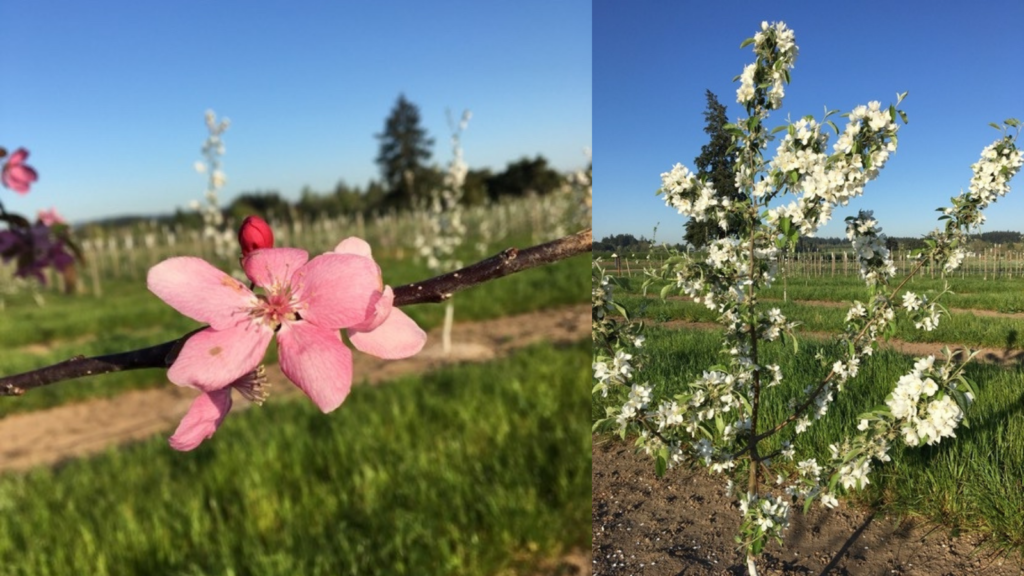
Thomas Kon, NC State Mountain Horticultural Crops Research and Extension Center, Mills River, North Carolina
Spring 2021 was not kind to southeastern apple growers (NC, SC, and GA). A pair of cold nights at pink bud stage caused some bud mortality, which resulted in a reduction in crop potential at some locations. When at petal fall, we observed 25 to 26 F at several locations, and many sites were below freezing for multiple hours. The result is widespread and significant crop damage/loss, with a few exceptions. Unfortunately, 2021 will be a difficult year for much of the southeastern apple industry.
Nikki Rothwell, MSU Extension, Traverse City, Michigan
We have a good crop of apples in NW Michigan. The crop is a bit lighter in our main apple growing region on the Ridge (just north of Grand Rapids). We have had some issues with fire blight this season, and I have also seen more scab than I would like to see so early in the season. The NW region of the state had some bad hail, but as always with hail, it is isolated–some orchards got lucky while others did not. The insect front has been slow with the cool weather early followed by the super hot, but I suscept with the rains, they will start to become more of an issue. Some areas of MIchigan received over 6″ of rain on the 24-28 June rain event. This humidity and wet conditions will also foster disease development if growers did not control primary scab.
Katrina Mendrey, Western Agricultural Research Center, Corvallis, Montana
The fall of 2020 has had a huge impact on cider apple production in the Intermountain West with several cultivars, in particular when trees are under five years, being severely damaged or killed by a sudden drop in temperatures in late October. Some of the cultivars that were severely damaged include Dabinette, Chisel Jersey, Roxbury Russet, Golden Russet and Ashmaed’s Kernel. The degree of damage was variable though based on location and the age of trees and a full report can be found here. For cultivars that came out of the winter undamaged, including Hewe’s Virginia Crab, Binet Rouge, Tom Putt, Muscadtte de Dieppe and Wickson, we’ve had good pollination and fruit set. Fire blight danger was high throughout bloom as usual. Whether trees made it through the high risk period uninfected largely will depend on grower control with effective sprays. So far we haven’t had any reports of damage and have been scouting several orchards for samples to include in a research study on antibiotic resistance in Montana fire blight.
Sherif M Sherif, AHS Jr. Agricultural Research and Extension Center, Winchester, Virginia
Our digital temperature data loggers placed in four different blocks in the AHS Jr. AREC’s research farm, Winchester, VA indicated that we were hit by killing freezing temperatures in the mornings of Friday (April 2) and Saturday (April 3), with the latter being more aggressive and long-lasting. In fact, the lowest we received on Friday was 24oF, but on Saturday, our trees were hammered by temps as low as 21oF for more than 30 min. 21 oF for 30 min or more are enough to kill 90% of apple flower buds at ‘tight cluster’, ‘first pink’ and ‘full pink’. On April 5, we collected flower clusters from Gala, Fuji, Pink Lady, Red Delicious, Zester, and Honeycrisp. Except for Zester, all the cultivars were only moving from ‘tight cluster’ to ‘first pink’. Zestar with flowers at ‘full pink’ showed 65% mortality. Other cultivars showed 45% (Fuji), 45% (Gala), 42% (Pink Lady), 15% (Red Delicious) and 5% (Honeycrisp). Unsurprisingly, king blossoms showed far more damage than side flowers. That being said, I would say that most Virginia growers, especially those in northern and central parts of the state, will achieve almost full-crop at harvest for apples. Growers insouthwest Virginia indicated that their apple orchards were hit hard by frost and they don’t expect an economic crop this year.
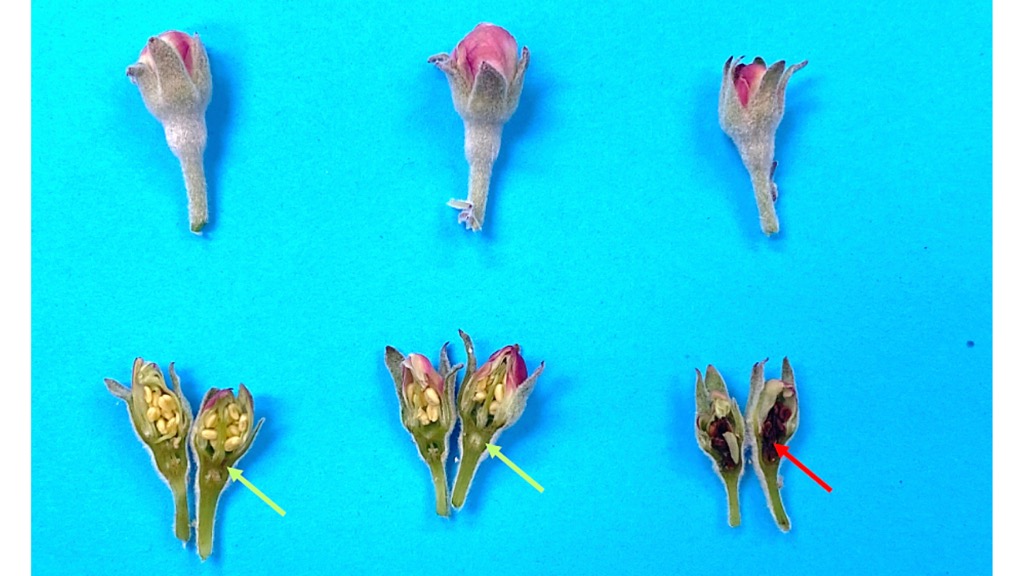
Photos from VA Tech AHS Jr. Agricultural Research and Extension Center
Renae Moran, University of Maine Highmoor Farm, Monmouth, Maine
Spring 2021 weather conditions were favorable for a heavy fruit set. Freezes occurred when trees were still at half-inch-green or tight cluster, so Maine has not had any cold temperature damage as far as I know. Some regions of the state had a very light crop last year and may be set up for biennial bearing, but hopefully, I am wrong. We had abundant bloom and good pollination, so we could be in for an excessive crop. As of May 26, most growers have applied a chemical thinner with favorable weather for good effectiveness. Last year, several growers in the southern part of the state had fireblight outbreaks, and late blooming cider varieties were particularly hard hit. As we progress through the fruit set stage, the lack of sufficient rainfall has many of us worried about another prolonged drought, but it could lessen the chance for more fireblight. Best of luck this season to all apple growers.



